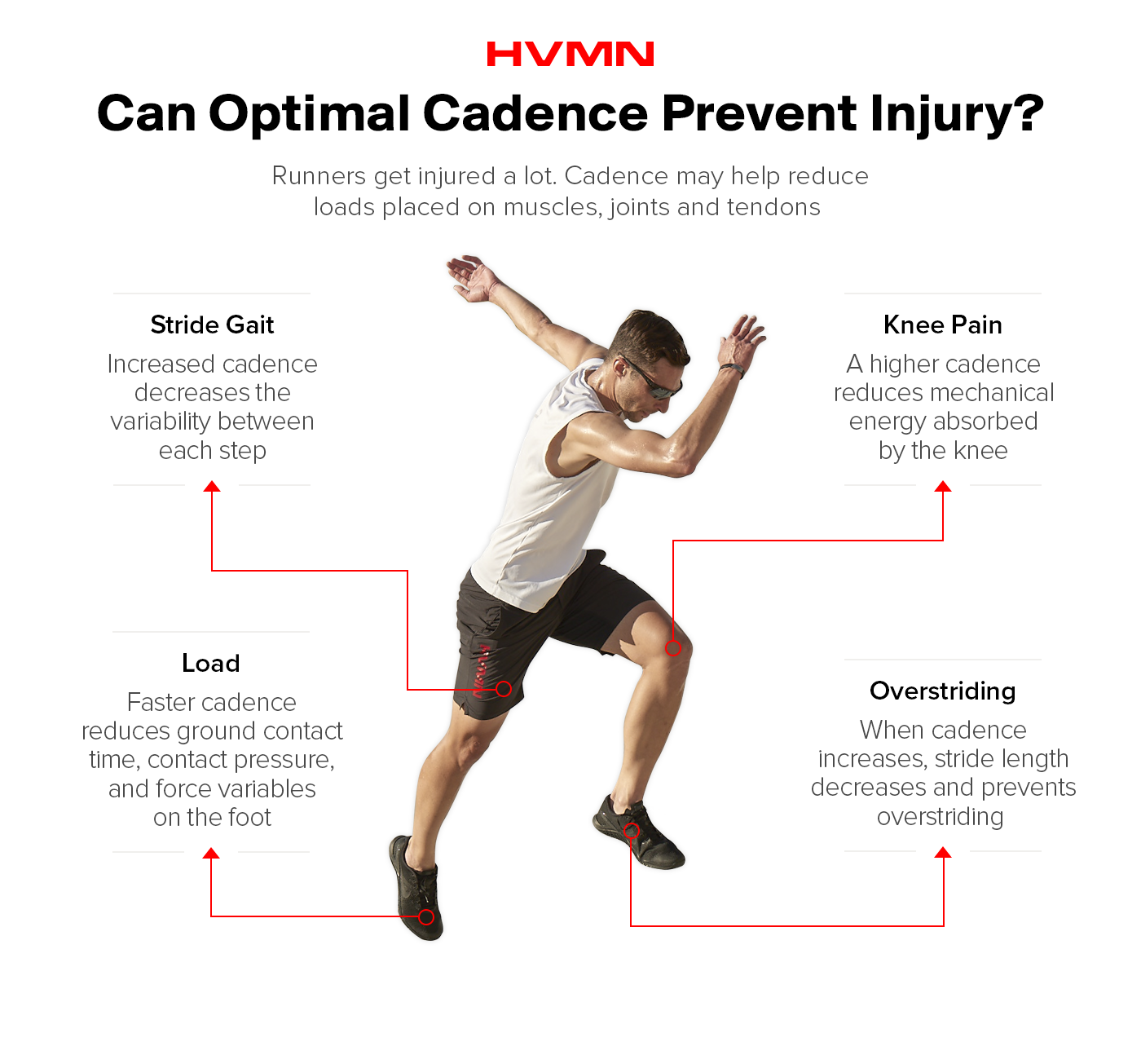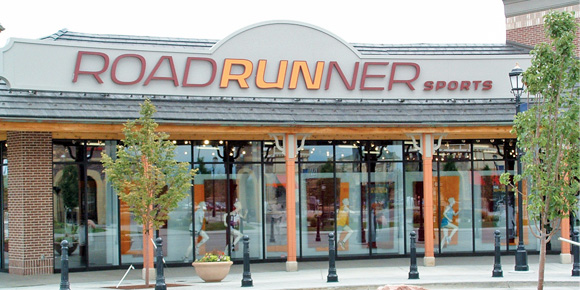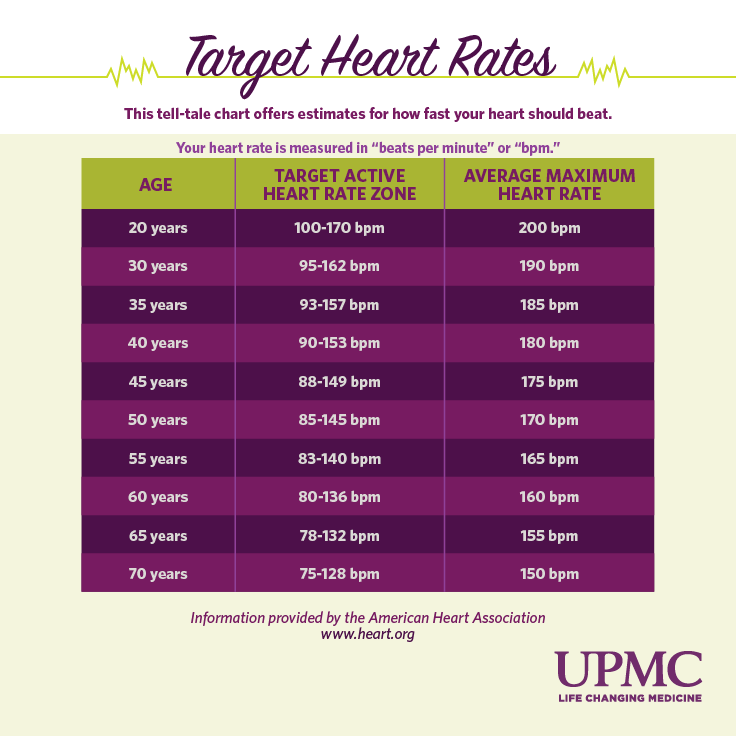Since most injuries are impact related cadence improvement becomes essential to the progression of the runner. For decades weve been told that 180 steps per minute SPM is the ideal cadence for runninga number that legendary running coach Jack Daniels.
 Optimize Running Cadence To Improve Performance H V M N Blog
Optimize Running Cadence To Improve Performance H V M N Blog
Top marathoners typically run with a cadence above 90 whereas most beginners will run at 7882.

What is a good running cadence. As I mentioned at the top the overall average cadence among all runners was 1820. Ideally well have variations in your cadence so your easy running might be at 160 and your quicker running might be 165. Top marathoners typically run with a cadence above 90 whereas most beginners will run at 7882.
Driving your elbows back with a quick short swing will speed up your running cadence and have you going smoothly faster at any time. 3 Run Tall and Dynamically Balanced Just increasing your cadence will make you go faster but to maintain that speed you need to develop an efficient stride that doesnt brake with each landing. Your running cadence is determined by your training history running ability and anatomy.
Perhaps the most effective way to improve your form and every metric associated with it is to Run fast regularly. A good running cadence happens first and foremost through effective training. According to conventional thinking a good running cadence is roughly 180 steps per minute.
Cadence is one of the two factors that make up a runners speed. The more the center of mass COM moves up and down in. Contrary to popular belief in most running circles there is no such a thing as an ideal universal running cadence.
The running speed is basically the multiplication of the cadence and the stride length. Simply put an improved running form will most likely positively impact on your running economy or how efficiently your body uses oxygen at a specific pace which should lead to faster running times. The average runner will have a cadence of 150 to 170 SPM Steps Per Minute while the fastest long-distance runners are up in the 180 to 200 SPM range.
The real crux of the paper though is in the actual values of cadence observed. Another benefit of quickening the cadence of a developing runner is a reduction in metabolic cost. The other is stride length.
What determines my running cadence. However you may find that there is no real variation in cadence that gives you even more scope to work in. The good news is that as you improve your cadence you will simultaneously be correcting your overstriding.
For most of us on a typical medium intensity run that natural groove will fall somewhere between 82 and 90 strides per minute. In general most running coaches would agree that an optimal running cadence for longer distance running 5 km would be around 90 steps per minute or slightly higher. The correct cadence can vary by individual.
170 and higher is ideal but ideal is slightly different for each person says Blaise Dubois a physiotherapist and owner of The Running Clinic in Quebec Canada. It is commonly expressed as revolutions per minute in either total or single steps. Good runners usually have a higher cadence because they usually go faster than beginners.
But here is the truth. How Stride Length Affects Your Cadence and Form. Optimal cadence is generally considered to be somewhere around 180 strides per minute.
The Origins Of The 180spm Myth. A cadence of less than 160spm is usually seen in runners who overstride. At the same pace a lower cadence means that larger steps are taken.
For decades now weve been told that 180 steps per minute SPM is the ideal cadence for runninga number that legendary running coach Jack Daniels. What is a good running cadence number. This simple framework will put the vast majority of runners into their own personal ideal running cadence range.
Good runners usually have a higher cadence because they usually go faster than beginners. Running cadence also known as a runners rhythm can be quite simply defined as the turn over rate of the feet or legs. For example if your base running cadence is 162 SPM your goal cadence should be between 170-178 SPM.
Most recreational runners will have a cadence between 150 to 170spm strides per minute topping out at 180spm 2. This is a good sign. In addition a higher running cadence can benefit running efficiency through increasing your running economy.
Its worth noting that these numbers are typically maintained in shorter-distance endurance races and full marathons. There is a running cadence a number of strides per minute that feels right for you the groove you naturally land in when you lace up the shoes and head out. Count each left foot attachment for 60 seconds and double the value obtained to obtain the cadence per minute.
Even if its not as fast as the elites this small increase will still improve your running performance and reduce your chance of injury² And like anything with running its crucial you take it. Running cadence is a very close relative of good running form since quick turnover means as little ground contact as possible.










